
Yes, it’s that time of year again! However, due to problems with finding a suitable venue, the screenings for this eleventh incarnation of Phoenix FearCon are being held virtually, through Festivee.com. It’s a bit of a double-edged sword. While I’m going to miss the physical showings, and the chance to have some of the film-makers present in person to talk about their work, I will certainly not miss sitting in a projection booth for 12 hours! The virtual theatre also means people anywhere in the world can watch, and the “on demand” nature of these screenings means you can watch them on your own schedule.
Another plus is it expands the films which we can show. In person, we’d be limited to no more than three features and a couple of shorts programs, but we’re now showing five features and over forty short films. This is good, not least because we had a record number of submissions this time round, up about 20% on last year – we still weren’t quite able to show everything we wanted to, because a line had to be drawn somewhere. For some reason, Spain seemed to be a particularly fertile country this time round, responsible for 10 out of the 47 official selections. But it was as international as ever, with entries coming from Brazil through Australia to South Korea.
Below, you’ll find reviews of the six features which were selected – they’re in alphabetical order. In early November, we’ll start reviewing some of the more interesting submissions which didn’t quite make the cut, for one reason or another.
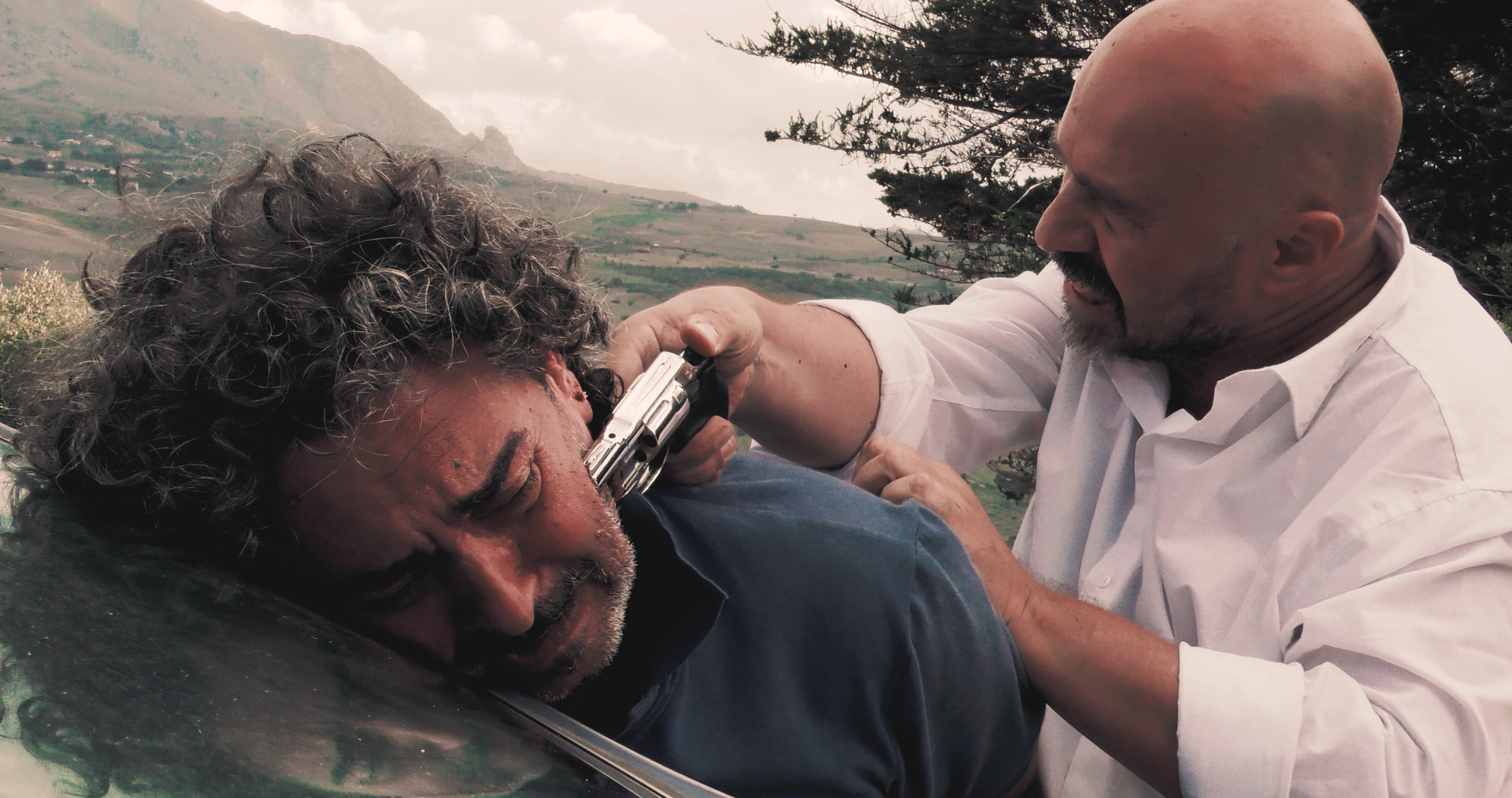
Daydark (2022)
Rating: B-
Dir: Fabrizio La Monica
Star: Ferdinando Gattuccio, Marco Balzarotti, Roberto Romano, Corrado Solari
a.k.a. Il Buio del Giorno
This has a great premise, even if it arguably doesn’t manage to squeeze all the potential out of it. Sicilian lawyer Giorgio Belmonte (Gattuccio) has been on a downward spiral since the abduction of his son several years ago, by persons unknown. In the wake of that, his marriage broke up, and he became an alcoholic. Waking up one morning after the latest drink-fuelled bender, he finds a gun, one bullet and a Bluetooth earpiece have been left beside him. Turns out the man (Balzarotti) who abducted his son has contacted him, and is willing to give himself over to Giorgio at sunset… providing the lawyer follows the perpetrator’s instructions exactly for the rest of the day.
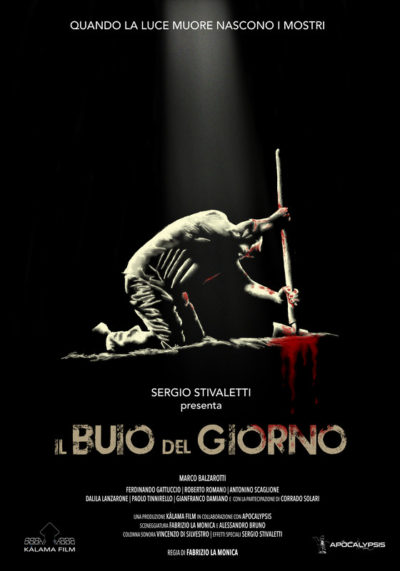 Ok, I was sold, simply on the most basic “What will happen next?” level of story-telling. As Giorgio’s new associate leads him through the city, and out into the woods, it feels like a more expansive version of Saw, with a puppet-master pulling the strings of his victim, for reasons that are simultaneously charitable and extremely cruel. On his trip, Giorgio is faced with a number of moral dilemmas, created by the tormentor, e.g. he’s handed a collaborator in the kidnapping, and has to decide what to do with him (top). You can’t help but wonder what you would do in the same situation. Things gradually become messier and bloodier, turning into a hostage situation, and with a memorable scene involving a large rock and a head. [SFX are by Italian veteran Sergio Stivaletti, who also produced this]
Ok, I was sold, simply on the most basic “What will happen next?” level of story-telling. As Giorgio’s new associate leads him through the city, and out into the woods, it feels like a more expansive version of Saw, with a puppet-master pulling the strings of his victim, for reasons that are simultaneously charitable and extremely cruel. On his trip, Giorgio is faced with a number of moral dilemmas, created by the tormentor, e.g. he’s handed a collaborator in the kidnapping, and has to decide what to do with him (top). You can’t help but wonder what you would do in the same situation. Things gradually become messier and bloodier, turning into a hostage situation, and with a memorable scene involving a large rock and a head. [SFX are by Italian veteran Sergio Stivaletti, who also produced this]
I’d say this is likely at its best when demonstrating the paranoia and inner turmoil through which Giorgio is going. For example, he’s told to go to a cafe and pick up an envelope; it’s clear his every action is being watched, the question is, by which of the patrons? Considering this, like a lot of the film, is Gattuccio speaking to an off-screen entity, it’s surprisingly gripping, though – perhaps inevitably – it does feel quite talky on occasion. While mostly grounded, you also have to accept that his tormentor is utterly all-knowing, in ways which seem to border on the supernatural at points; it’s arguably close to a giallo influence.
Unfortunately, I don’t think La Monica proves quite able to stick the landing. You’d expect the film to end in the long-awaited confrontation… which it both does and doesn’t. There’s an extended coda, which eventually gets to a reasonably satisfactory wrap-up, though you may well have more questions than answers. It’s another feature perhaps carried over from the giallo genre; in my experience of it, endings there are frequently problematic. It’s not sufficient to devalue the entire experience, with enough elements that are above average, or at least solid. However, considering how much I was enthralled by the high-level concept, I confess to being somewhat disappointed that I ended up merely liking this, rather than loving it.
This review is part of our Phoenix FearCon 2022 coverage.
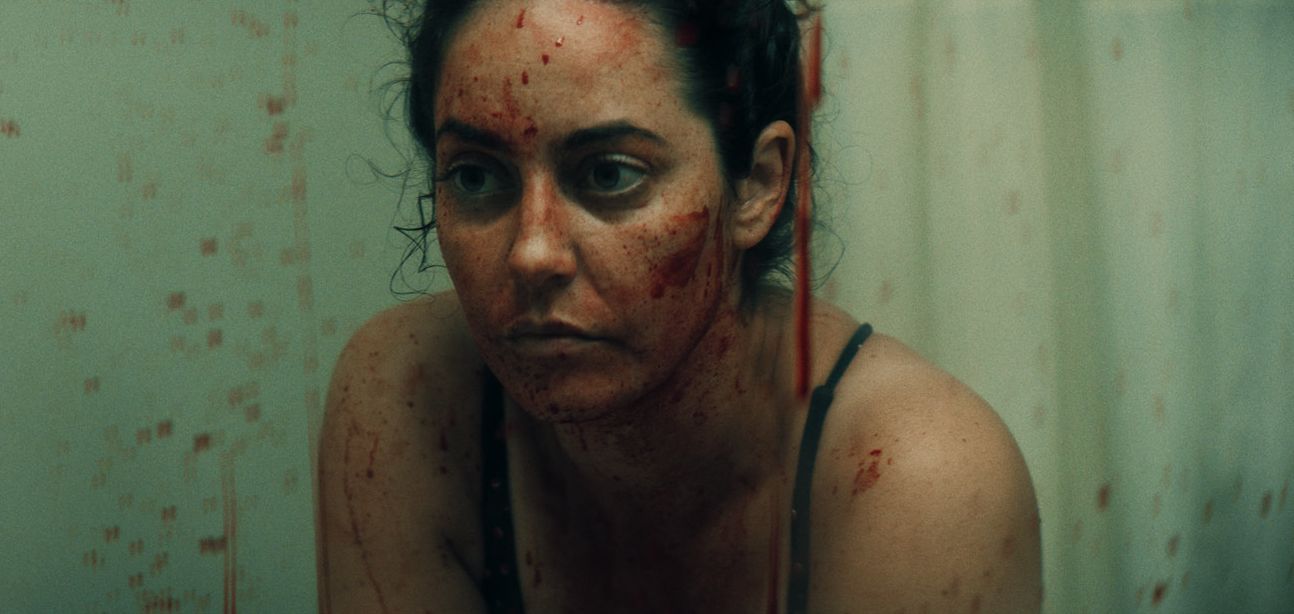
Do Not Disturb (2022)
Rating: B+
Dir: John Ainslie
Star: Kimberly Laferriere, Rogan Christopher, Janet Porter, Christian McKenna
There are FearCon submissions we get where people seem unclear as to the nature of our festival. These are the “Is this a horror movie?” entries – so called after the question we typically ask each other about 30 minutes in, when a film appears to be avoiding our genre entirely. This was on its way there: I don’t think we actually said it, in part because it was still an interesting and well-assembled watch. But we were certainly getting towards the post-code, in part due to a synopsis that undersold itself a bit. By the end though, there could be only one answer to The Question. Fuck, yes. This is a horror movie.
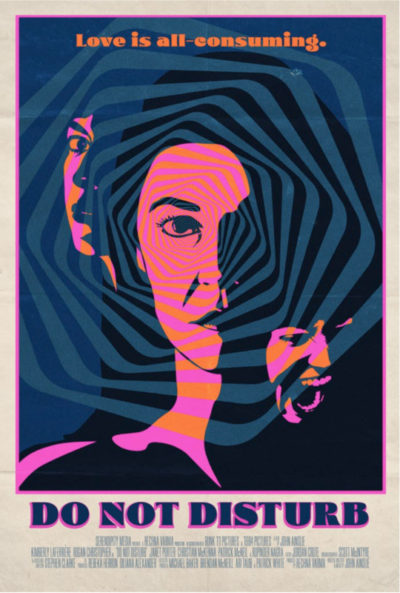 It begins with relatively newly-wed couple, Chloe (Laferriere) and Jack (Christopher) going on a vacation to Miami. There, they meet swinging couple Wayne (McKenna) and Wendy (Porter), and it becomes increasingly clear that Chloe and Jack have Issues – capital letter used quite deliberately. Substance abuse; infidelity; post-miscarriage depression; problems of general trust; inability to communicate honestly. There’s enough material here for a couples’ counsellor conference. It’s not the sort of thing we like to watch, honestly: I’m of the belief that if you don’t genuinely want to be with someone, then get out of the relationship. Watching couples fight is only fun when it’s on The Jerry Springer Show.
It begins with relatively newly-wed couple, Chloe (Laferriere) and Jack (Christopher) going on a vacation to Miami. There, they meet swinging couple Wayne (McKenna) and Wendy (Porter), and it becomes increasingly clear that Chloe and Jack have Issues – capital letter used quite deliberately. Substance abuse; infidelity; post-miscarriage depression; problems of general trust; inability to communicate honestly. There’s enough material here for a couples’ counsellor conference. It’s not the sort of thing we like to watch, honestly: I’m of the belief that if you don’t genuinely want to be with someone, then get out of the relationship. Watching couples fight is only fun when it’s on The Jerry Springer Show.
Then the mind-altering substances show up. While sunning themselves on the beach, a clearly high individual literally showers them with peyote and other drugs before walking into the sea and vanishing. In one of the worst decisions in the history of poor decisions, Chloe and Jack decide to indulge in this unexpected bounty. What subsequently follows can probably be described as the best anti-drugs commercial since Requiem for a Dream. Because, after initially being all fun and games (Christopher is surprisingly good at slapstick comedy), it eventually unleashes some primeval instincts that… well, let’s just say, leave their hotel room in a state with which housekeeping might have problems. On the plus side, they won’t be spending much on dinner for the rest of their vacation.
I mentioned Jerry Springer above, and there’s almost the same kind of car-crash appeal. By which I mean, you’re watching people who ought to know better, making highly questionable choices, and paying the price for them. On one level, it’s utterly ludicrous. I certainly have questions about some elements: I suspect corpse disposal is harder than it seems here. Yet this is probably where the extended set-up works, in that you’ve been drawn in and become invested in these people. By the time they start acting like South American tribesmen, it’s too late to back out. You can only watch, as things get ugly, messy and gnarly. Ainslie does an excellent job of avoiding the usual pitfalls of movies about drugs, on either end, and I get the feeling this will stick with us for a while.
Just say no, kids.
This review is part of our Phoenix FearCon 2022 coverage.
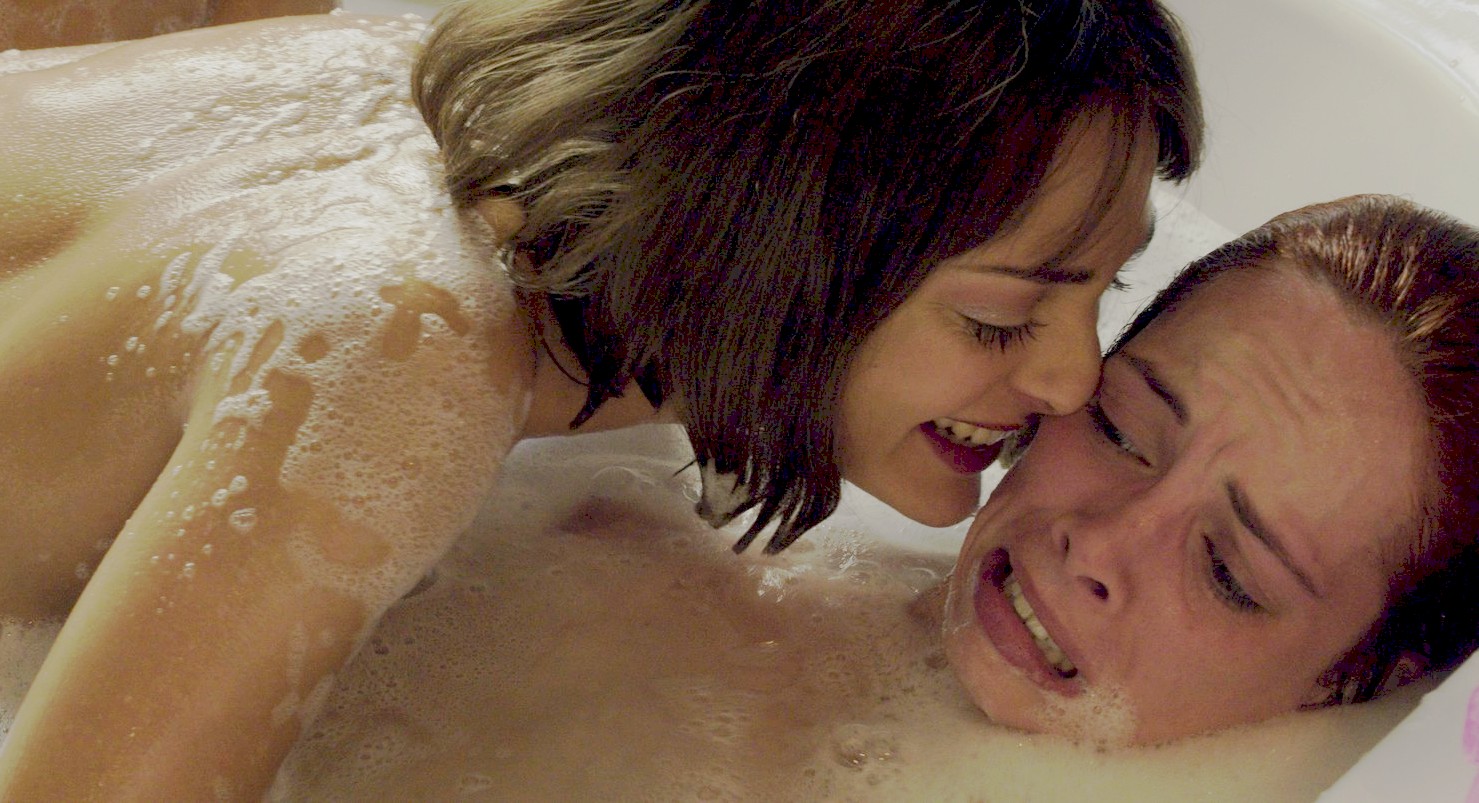
Killing Time (2022)
Rating: B
Dir: Norberto Ramos del Val
Star: Marta Almodóvar, Alba Fontecha, Claudia Molina, Jorge Páez
a.k.a. Matando el tiempo
This is one of those movies it’s difficult to talk about in detail, because of the way it yanks the carpet out from underneath you in the middle. In effect, it becomes an entirely different film in the second half. This kind of transition is difficult to pull off, yet the director manages it here. He’s helped in this job the initial set-up, which does a good job establishing a world of weirdness, where anything can happen. When the carpet-yanking subsequently does, this makes it a lot easier for the viewer to go with the flow and accept it, as well as the twists that follow over the remainder of the movie.
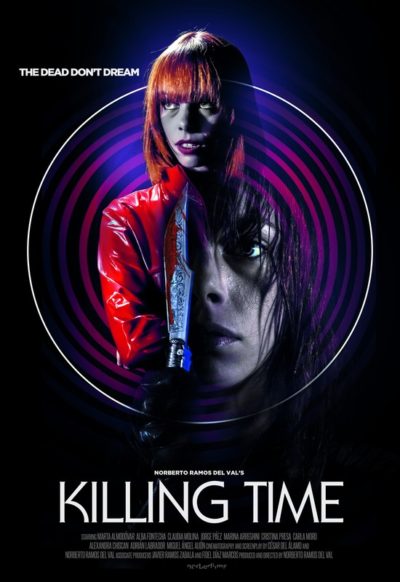 Initially, it’s the story of Sonia (Almodovar), an artist who inherited a house from her aunt, and has moved in, to work on her paintings. Her agent, Laura (Molina), is increasingly concerned about the impact the house, with its troubled history, is having on Sonia’s psyche – and with good reason. For the artist is plagued with strange dreams, increasingly dragging her into a darker place, psychologically, sexually and spiritually. As we learn through a drunken rant to a Tinder date, when she lived there as a young child, the house could make Sonia live other people’s dreams. It’s not a power which has abated with time: “The house is the antenna and I’m the receiver,” she explains.
Initially, it’s the story of Sonia (Almodovar), an artist who inherited a house from her aunt, and has moved in, to work on her paintings. Her agent, Laura (Molina), is increasingly concerned about the impact the house, with its troubled history, is having on Sonia’s psyche – and with good reason. For the artist is plagued with strange dreams, increasingly dragging her into a darker place, psychologically, sexually and spiritually. As we learn through a drunken rant to a Tinder date, when she lived there as a young child, the house could make Sonia live other people’s dreams. It’s not a power which has abated with time: “The house is the antenna and I’m the receiver,” she explains.
This leads up to the point where the movie shifts sideways, focusing in the second half on Natalia (Fontecha), a former college friend of Sonia who is now a lawyer. She also becomes worried about Sonia’s mental state, and travels, with her easy-going boyfriend Daniel (Páez), to pay a visit. Their unannounced arrival annoys Laura, setting the stage for the final, bloody resolution, which perhaps goes to prove the truth in the old adage, “The house always wins.” Despite the Spanish origins, this is heavily influenced by Italian giallo movies, though is more gynocentric. While there is no shortage of twisted carnality, dream (or, at least, dreamlike) sequences, and women in peril, it’s also the women who are doing the imperilling, rather than some dude in black gloves.
Initially, the results do seem a bit of a mess, with an uncertainty, albeit entirely deliberate, as to how much of what’s happening is real, was previously real, or is simply a product of Sonia’s slowly disintegrating mind. It’s an approach that is often used as an excuse to cover up sloppy writing (see: Dario Argento’s entire filmography since Opera). That doesn’t appear the case here, although it does occasionally misstep, e.g. Laura suddenly goes from caring about her client to an almost callous disregard as to her existence. However, as mentioned above, a loose approach is likely necessary, to set the stage for the second half. If you hold on for the entire ride – and please keep your arms inside the vehicle at all times – then you should find the eventual payoff to be quite satisfactory.
This review is part of our Phoenix FearCon 2022 coverage.
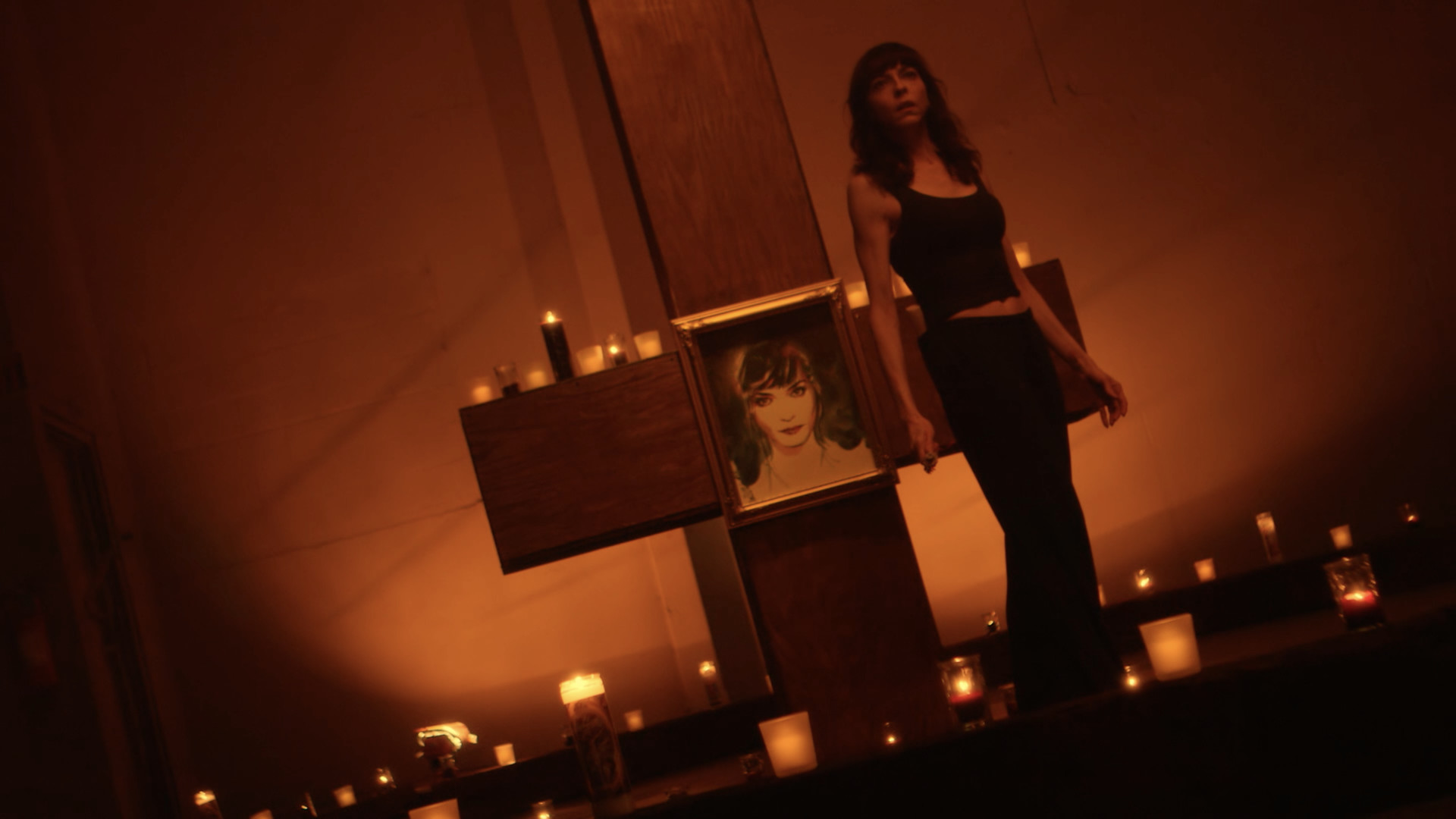
A Place Among the Dead (2020)
Rating: B-
Dir: Juliet Landau
Star: Juliet Landau, Deverill Weekes, Seven McDonald, Gary Oldman
This is certainly one of a kind, and if not entirely successful, can only be admired for its relentless refusal to fit into any easy slots. It’s part mockumentary, part vampire film, part serial killer flick, and part arthouse meditation on aging and death in Hollywood. Landau (the daughter of Martin, and the film opens with family pics and other ephemera), is best known as Drusilla on Buffy the Vampire Slayer. Here, we meet her playing a tired, middle-aged and frazzled version of herself, making a documentary about vampires. This involves her quizzing Hollywood colleagues about, for example, the nature of evil. More or less subtly, those she talks to have all been linked to vampires in popular culture, e.g. Oldman, Ron Perlman, Anne Rice, etc. [Buffy creator Joss Whedon shows up: a bit awkward in light of subsequent events]
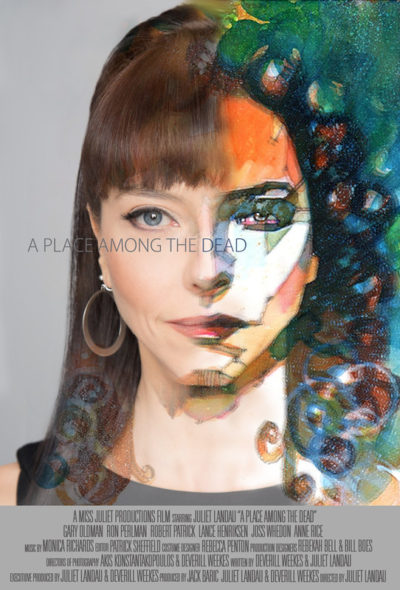 However, she ends up becoming involved as the police investigate a series of murders, where young women have been drained of blood. [It is an obvious and shaky narrative conceit, that law enforcement would let an actress just trot along beside them, for no particular reason] Juliet gradually becomes obsessed by the case, estranged from her other half (real-life husband Weekes) and convinced the murders are carried out by a centuries old vampire called Darcel. She tries to protect a victim (McDonald) and eventually decides it’s up to her to take revenge for the victims by… Well, frankly, going all Buffy on his ass. Except, that’s not quite as easy as it was in the TV series. No Scoobies. No Giles. And certainly, no powers, beyond those normally available to an actress in her forties.
However, she ends up becoming involved as the police investigate a series of murders, where young women have been drained of blood. [It is an obvious and shaky narrative conceit, that law enforcement would let an actress just trot along beside them, for no particular reason] Juliet gradually becomes obsessed by the case, estranged from her other half (real-life husband Weekes) and convinced the murders are carried out by a centuries old vampire called Darcel. She tries to protect a victim (McDonald) and eventually decides it’s up to her to take revenge for the victims by… Well, frankly, going all Buffy on his ass. Except, that’s not quite as easy as it was in the TV series. No Scoobies. No Giles. And certainly, no powers, beyond those normally available to an actress in her forties.
It’s less linear than the above suggests, drifting off into soliloquies about the inner voice of self-doubt or whatever. If you don’t have questions when the final credits roll, you probably haven’t been paying enough attention. It feels like there is a lot to unpack here, and a second or third viewing might help, going in with an idea of what to expect. We had no real clue, and it took a while to get into the rhythm. If you don’t manage that, it could well end up seeming considerably longer – or “denser” might be a more charitable designation – than its 76 minutes.
On the other hand, the fragility of its connection to the viewer is a factor in the viewing experience. You have to put in conscious effort to sustain the connection, and be open to what Lamdau wants to show you. At times, this can be rough to the point of rawness. At others, it becomes almost head-spinningly meta, as when a club patron recognizes “Drusilla”. Landau doesn’t quite roll her eyes, though you sense she wants to. I woke up the next morning, unsure if I had actually watched this, or just imagined it. Up to you whether that’s a ringing endorsement or brutal condemnation.
This review is part of our Phoenix FearCon 2022 coverage.
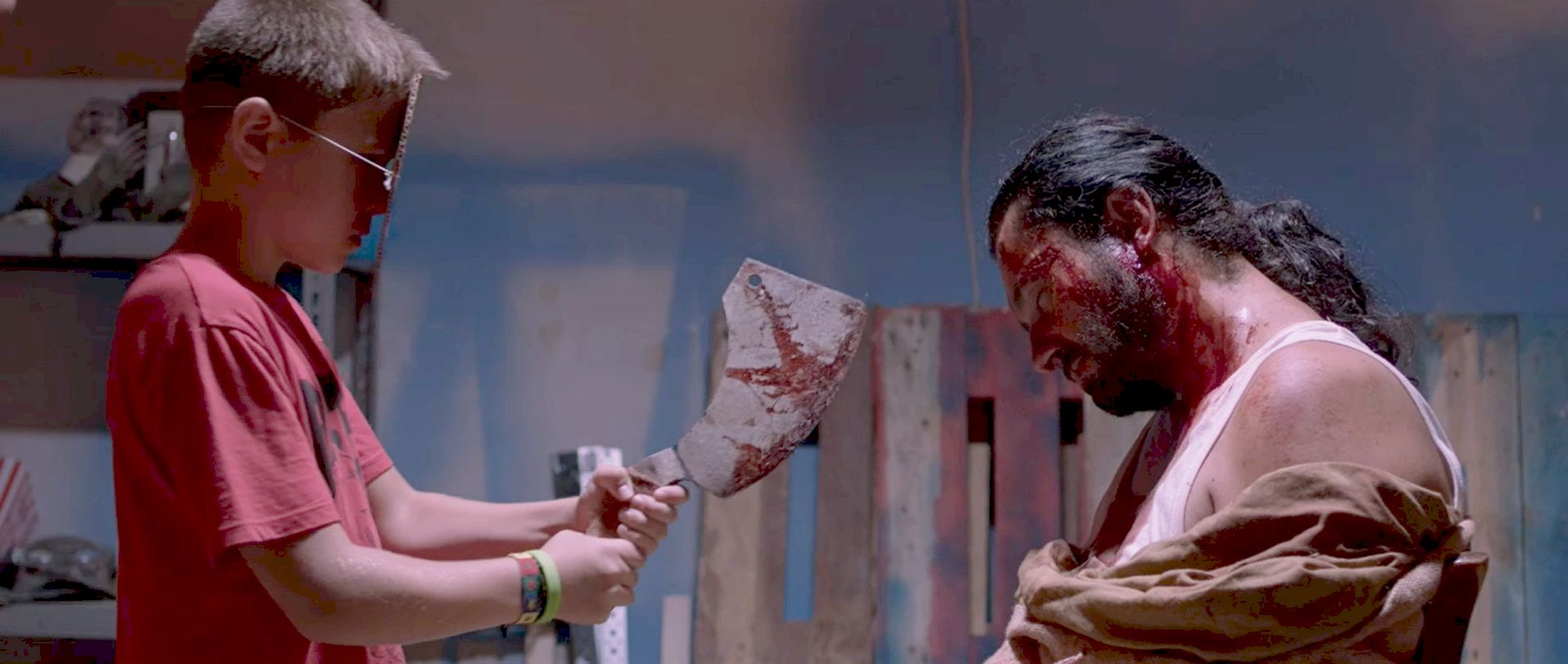
Slasher (2022)
Rating: B
Dir: Alberto Armas Díaz
Star: Sergio Alguacil, Mario Gallardo, Fabiola Muñoz, Reyes Monaj
Behind a very terse and up-front title, this is certainly a different take on the genre. It takes place in a rural area of Spain, beginning a decade or so ago when the “Red Demon” was terrorizing the area. But it’s a masked, psychotic killer with a moral code, leaving the locals alone, and instead preying solely on tourists and visitors. Turns out to be a family business, with young Julio idolizing his father, down to making a self-sized, cardboard version of the wooden mask his father wears (above). Fast-forward to the present day, and his mom, Carmen (Monaj) decides it’s time for Julio (Alguacil) to take up the mantle, and resurrect the Red Demon. However, the power in the mask comes with a price, and it’s not necessarily one Julio wants to pay.
This side of things is super. Few slasher films offer such a well-done insight into the process by which their killer becomes one. It’s nice to see things like Julio, despite his enthusiasm, struggling with his first kill (the method of which is certainly a new one). His qualms about whether or not to follow in his father’s footsteps provide additional depth, and among masked psychos, make him one of the more… Well, I hesitate to use the word “likable,” but here we are. The film’s problems are more on the other side of the equation, where the visiting group of victims, led by Lucas (Gallardo) and his girlfriend Ursula (Muñoz), run the gamut from bland and uninteresting to actively obnoxious.
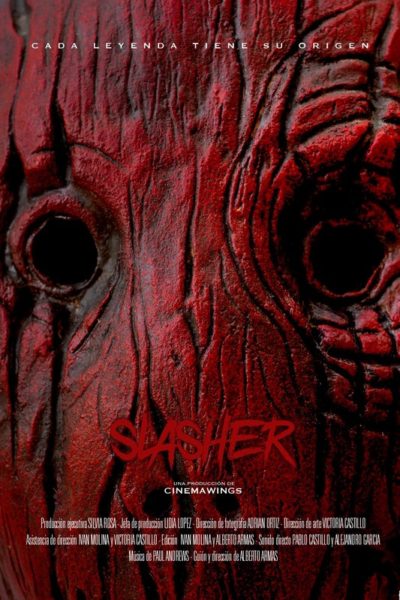 I suppose this could be the point. Yet every scene spent with them bickering about their relationships, taking drugs. etc. had me wishing the film would get back to the far more interesting topic of Julio and his situation. I will confess I did laugh at their efforts to appear “normal” during a visit by the local police, when off their face on ‘shrooms. In general though, they are only present as fodder for Julio’s coming of age. For example, with him torn between his desire for one of the girls, and the imperative (both genetic and through upbringing) to stab her repeatedly with a sharp object. That’s something to which we can all surely relate. Oops. Did I say that out loud?
I suppose this could be the point. Yet every scene spent with them bickering about their relationships, taking drugs. etc. had me wishing the film would get back to the far more interesting topic of Julio and his situation. I will confess I did laugh at their efforts to appear “normal” during a visit by the local police, when off their face on ‘shrooms. In general though, they are only present as fodder for Julio’s coming of age. For example, with him torn between his desire for one of the girls, and the imperative (both genetic and through upbringing) to stab her repeatedly with a sharp object. That’s something to which we can all surely relate. Oops. Did I say that out loud?
Slightly underplayed is the notion, mentioned in passing, that the more people Julio kills, the more invulnerable he becomes, but the slower he is able to move. This is a genius idea: it explains a lot about the pace at which Michael Myers, Jason, etc. amble around in unstoppable pursuit of their prey. In the light of this, the ending makes a good deal of sense, and sets things up for a potential franchise that had me genuinely interested in seeing where it might lead. To use an old proverb, it appears that the family which slays together, stays together. If so, this nuclear unit should certainly be around for a few generations to come.
This review is part of our Phoenix FearCon 2022 coverage.
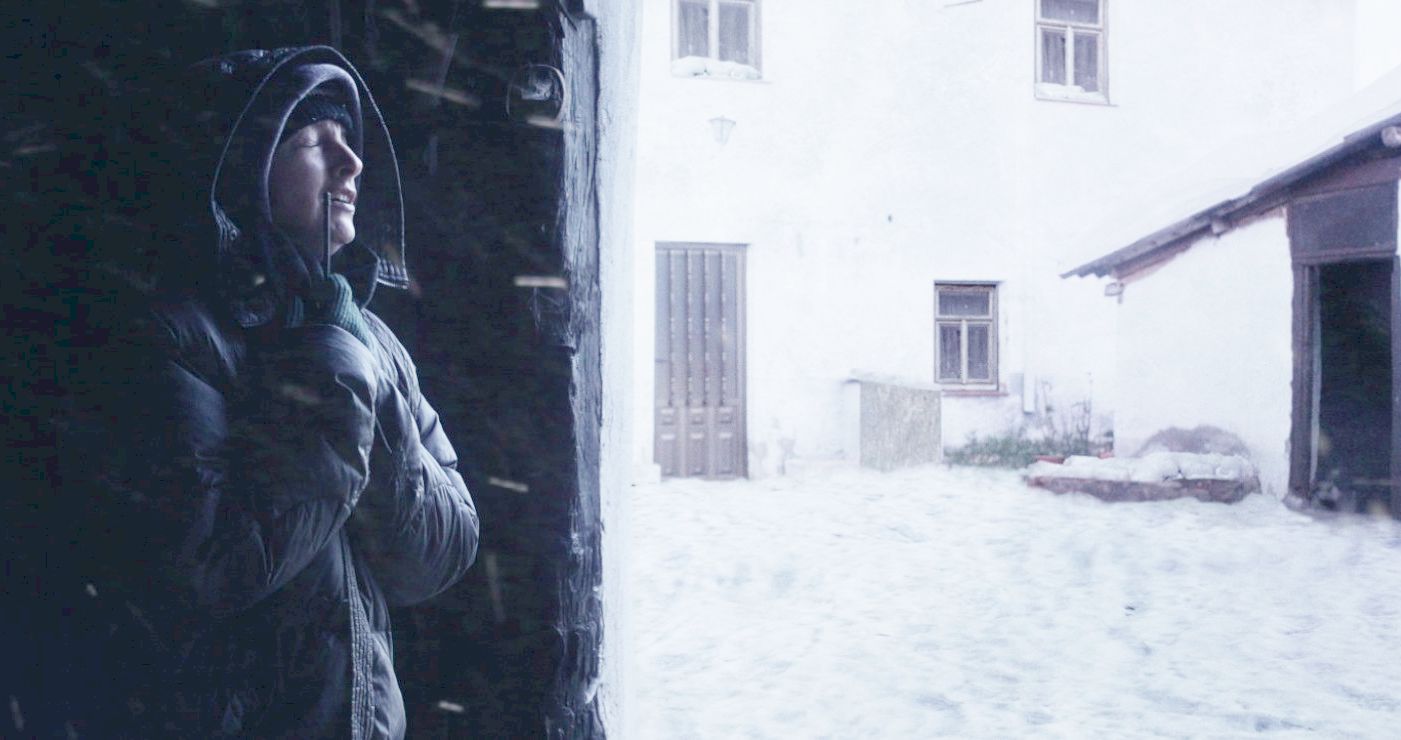
The Winter Hunger (2021)
Rating: B-
Dir: Álvaro García Gutiérrez
Star: Gustavo Fernández, Beatriz Toyos, Mariu RuÍz OrtÍz, David Fernández Mayora
This takes place in the aftermath following an outbreak of a mutated and highly infectious version of rabies, which began in Sumatra (no word if sprung from a Rat-Monkey…) and quickly spread across the world. Three months later, anyone still alive who knows what’s good for them, have fled the cities and are seeking sanctuary in the less populated – yet still highly dangerous – rural areas. One such group is under the leadership of Mario (Fernández), and they eventually find sanctuary in a remote village compound, with another set of survivors, led by Jairo (Mayora).
Yet things may not be quite as they seem. One of Mario’s party goes missing, and when a search is mounted, Jairo is shot in the forest by a third group, who apparently have a beef with him. Then there’s the question of the mysterious supply of fresh meat on which they subsist. This lasts even as winter lowers its frozen hand down on the countryside, limiting the ability of the survivors to forage for supplies. Anyone who has seen The Walking Dead will not be shocked by the source there, though I have to say, the actual resolution still managed to be more twisted than I expected. Actually, there is a good deal of TWD influence generally. While these are not technically zombies – someone is verbally slapped down for using the z word – we are dealing with mindless, voracious creatures with little left of their better nature, and a taste for human flesh.
 Particularly familiar, is the way it feels that the infected may not be the biggest threat in the long run, compared simply to other people. Now, we quit watching TWD a long time ago: that may actually work in this film’s favour, as there has been a few years of palate cleansing since. If this recycles a lot of familiar ideas, we’re no longer as generally burned out on the genre as we were at that point. It helps that the cinematography is top tier stuff, with a lot of aerial footage that emphasizes just how small and insignificant the people are in this situation. It definitely helps ensure that the moments of impact pack a genuine punch.
Particularly familiar, is the way it feels that the infected may not be the biggest threat in the long run, compared simply to other people. Now, we quit watching TWD a long time ago: that may actually work in this film’s favour, as there has been a few years of palate cleansing since. If this recycles a lot of familiar ideas, we’re no longer as generally burned out on the genre as we were at that point. It helps that the cinematography is top tier stuff, with a lot of aerial footage that emphasizes just how small and insignificant the people are in this situation. It definitely helps ensure that the moments of impact pack a genuine punch.
The problem for me was, it all felt rather too loosely structured and disjointed. For instance, it begins with an apparent incident at a school involving Marion, but the details of it remain opaque for the longest time. There are also dreams, flashbacks, and occasional moments where the movie simply seems to get bored and drift away, when what feels like quite pivotal information is about to be revealed. It’s all rather frustrating, because the movie gets so much of the other stuff right, with decent performances and production values that are well above what you typically get in the genre. However, I’m too much a believer in cinema as a medium for telling stories, to be able to overlook the flaws in that department entirely.
This review is part of our Phoenix FearCon 2022 coverage.
